An examination of the native environment to understand a tree's aesthetic.
Among the most impressive landscapes that North America has to offer, the caldera that is Crater Lake paints a beautiful image of destruction. The crystal clear water, and inverted volcano shows the power, harshness, and force that nature can spontaneously exert. Surrounding this beautiful landmark is a landscape that is informed by disease, desiccation, intense sun and heat. As this ever-changing landscape continues to lose its footprint, the pillar species of the Whitebark pine (Pinus albicaulis) is at risk of extinction due to climate change, and the proliferation of white pine blister rust. It is from the respect and out of the desire to preserve some degree of influence, inspiration, we bring attention to this changing condition and this disappearing relic of antiquity in the Whitebark pine that we explore Crater Lake as a landscape.
Anatomy of a Landscape
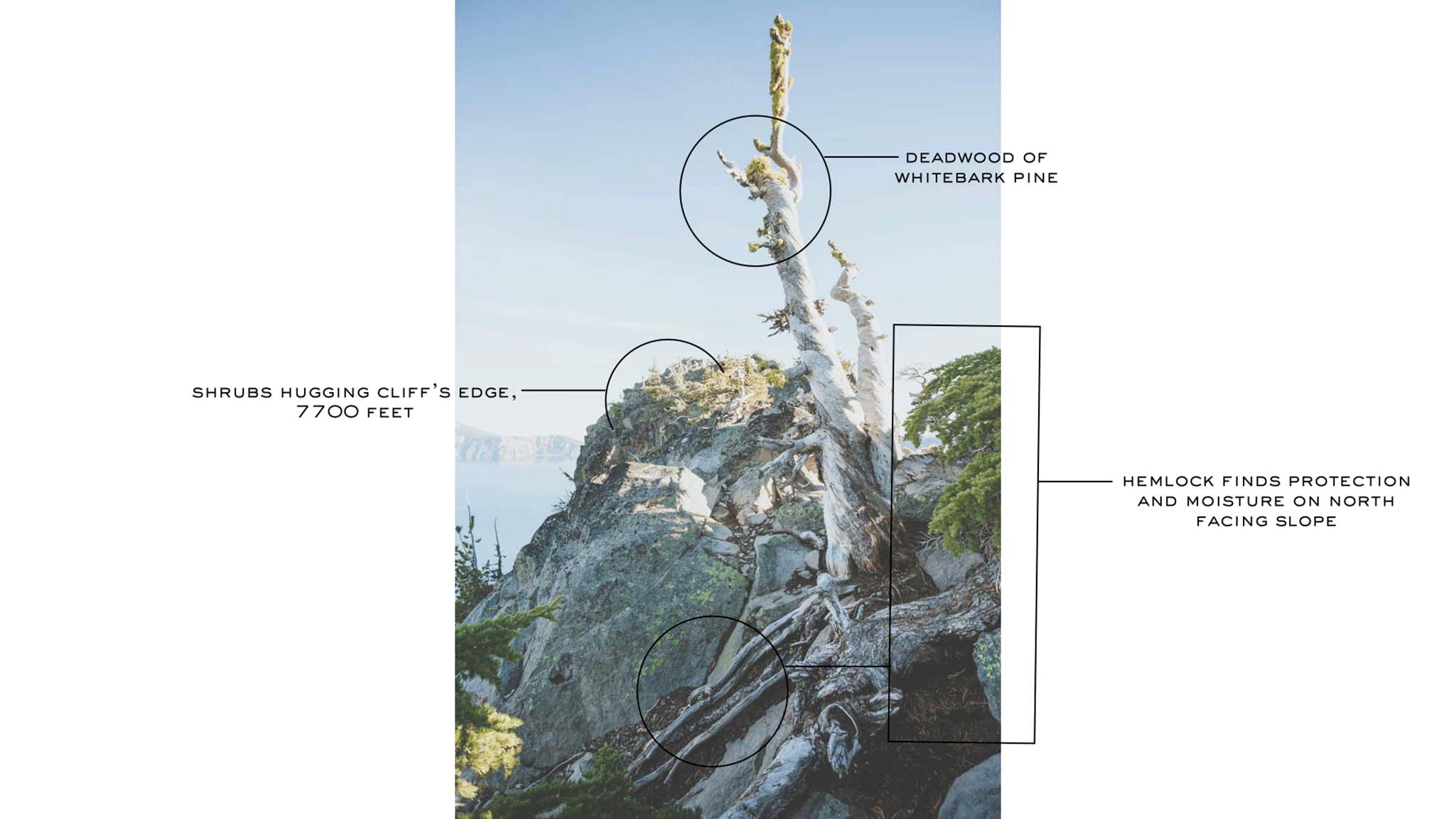
Eastern movement of storms coming off of the Pacific cross the landmass, hitting the high elevation of the Cascades. 7700 feet up, shrubs hug cliff’s edge, exposed. Deadwood of a deceased Whitebark pine remains, while a Hemlock finds protection and moisture on the north facing slope, where moisture is more abundant.
The Landscape

A grove of young pines develop in the arid landscape beside the rim of the Crater Lake caldera. These are the pieces that have grown back into the landscape following a fire. The lack of growth on right side of the young pine in the foreground is prevented by the shade of a neighboring tree, while the influence of wind off the lake is apparent in the directional growth of stunted trees nearby.
Maximum Exposure
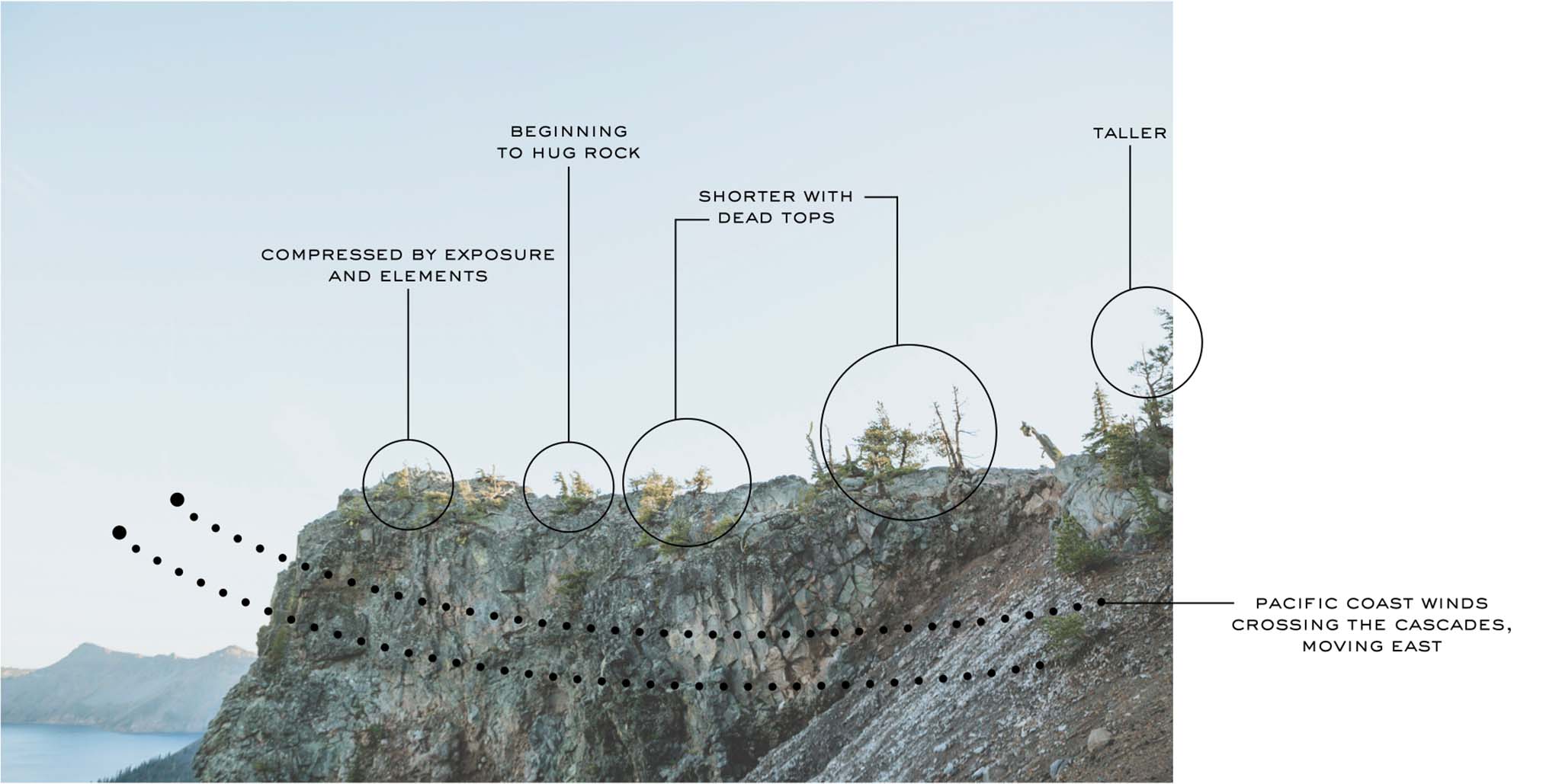
On the rim of the caldera, where the sparseness of the environment does not facilitate the movement of fire, there is very little understory and an abundance of rock. The trees along the ridge line become more stunted as they grow closer to the edge of rim, becoming more exposed. Pacific coast winds crossing the Cascades, moving east, influence the slant of these exposed trees.
Life Changing Influences
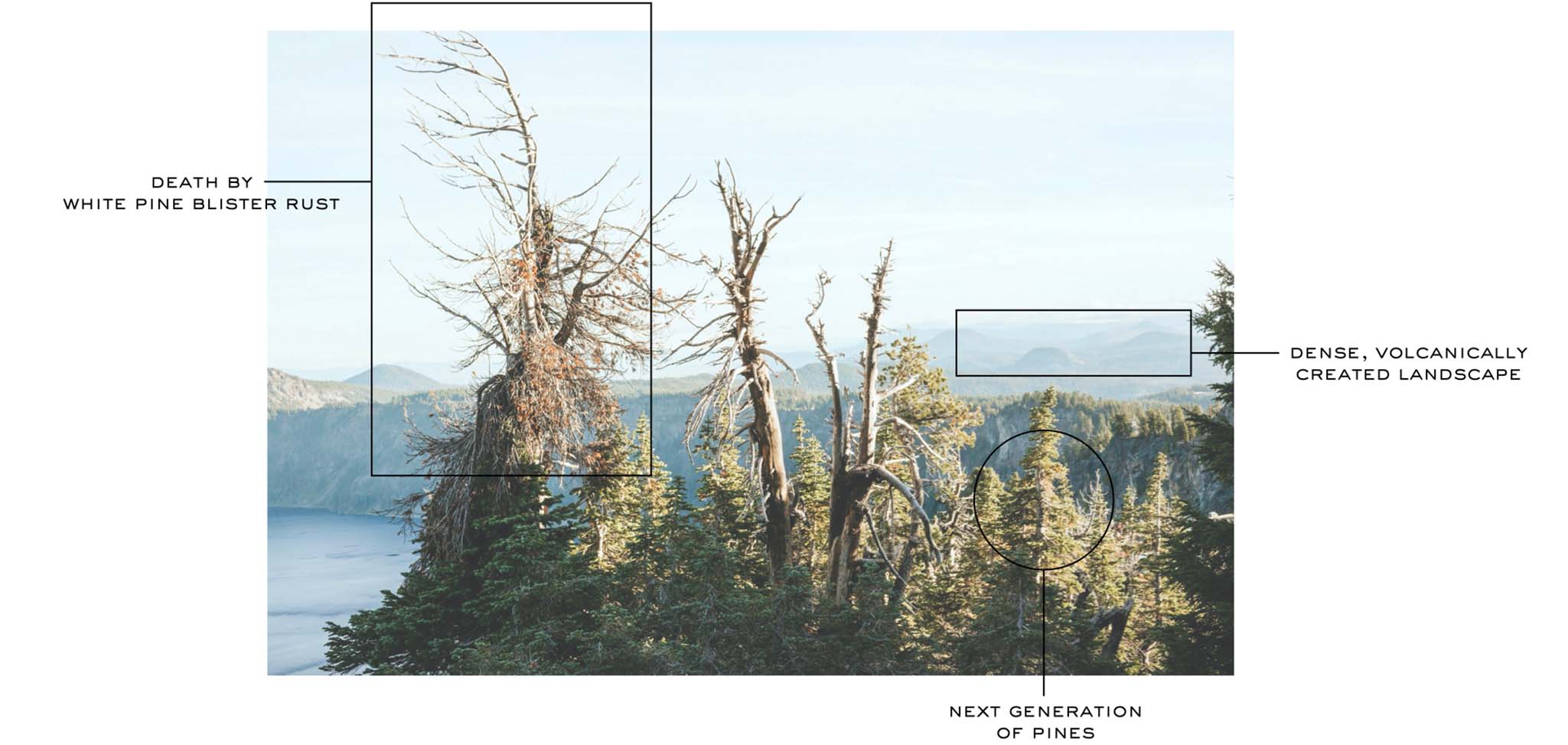
The density of the volcanically created landscape in the Cascade mountain range is at risk, as a majority of the White bark pines suffer from White pine blister rust. As the fast spreading disease rapidly eliminates the largest trees, there is hope for survival in the next generation of pines nearby.
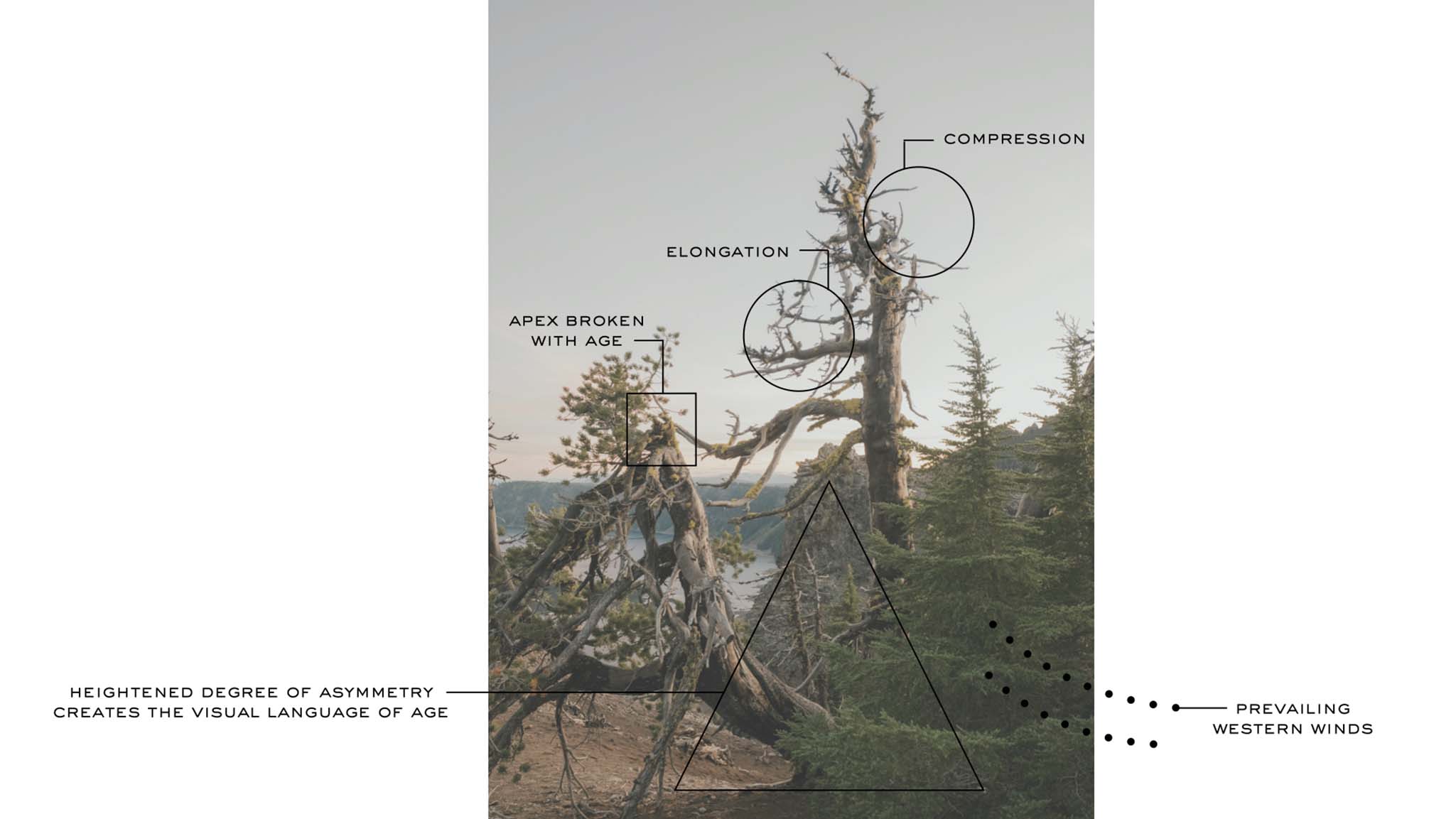
Prevailing western winds from the Pacific shore pass through Whitebark pines in middle age. The foreground tree, with its heightened degree of asymmetry and broken apex, illustrates the visual language of age. The deceased tree in the background, another victim of White pine blister rust, shows the remnants of compressed and elongated growth that was guided by the direction of the wind.

Below the crest of the cliff, a young pine grows. The compressed branches insinuate the the impact of heavy snow, and a unique growth pattern is revealed in relation to the wind current following the shape of the land.
Growth in Response to Prolonged Exposure
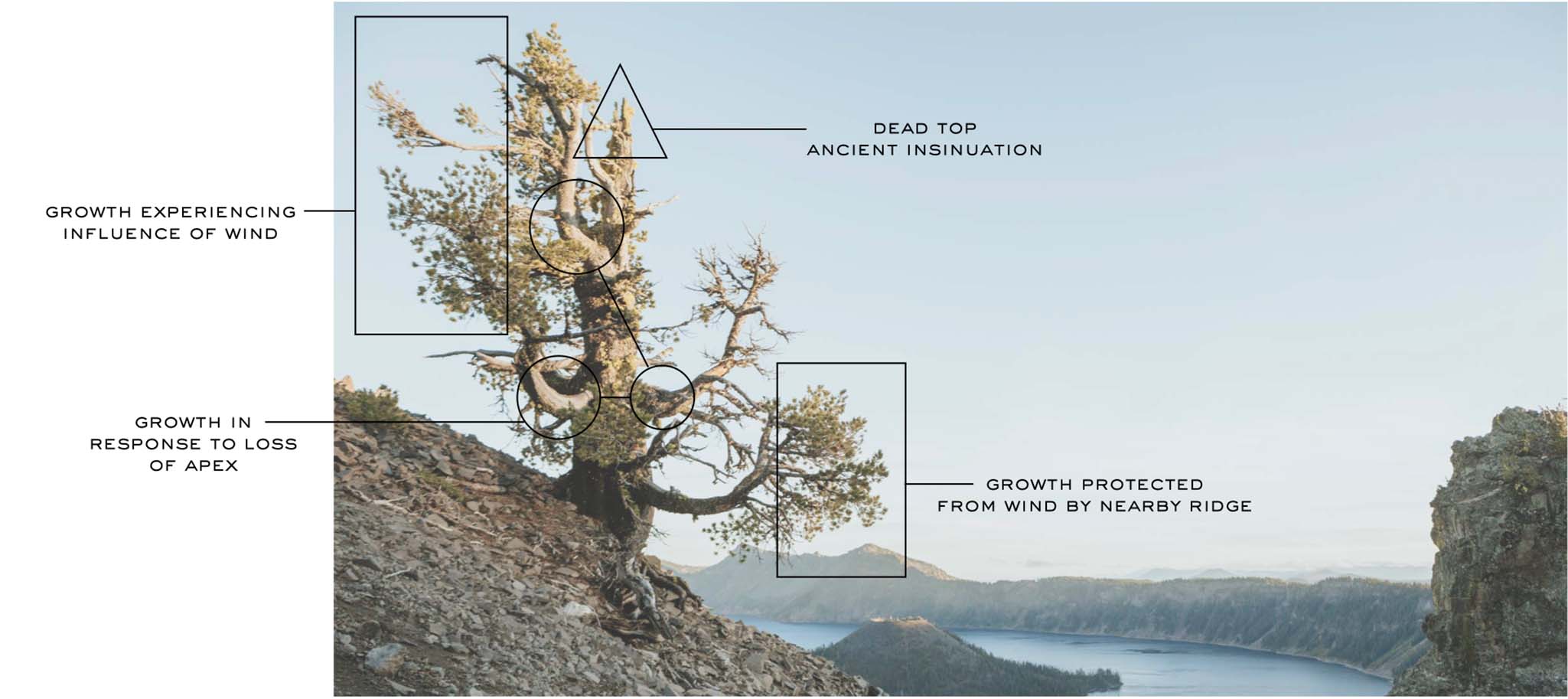
The dead top of this White bark pine insinuates ancient, with secondary branches growing up as reiterations in response to the loss of the apex. Exposure to wind is apparent on the left side of the tree, as the branches move in a windward direction. The lower right branches are protected from the wind by a nearby ridge, allowing for upward growth to continue.
Ancient Aesthetic
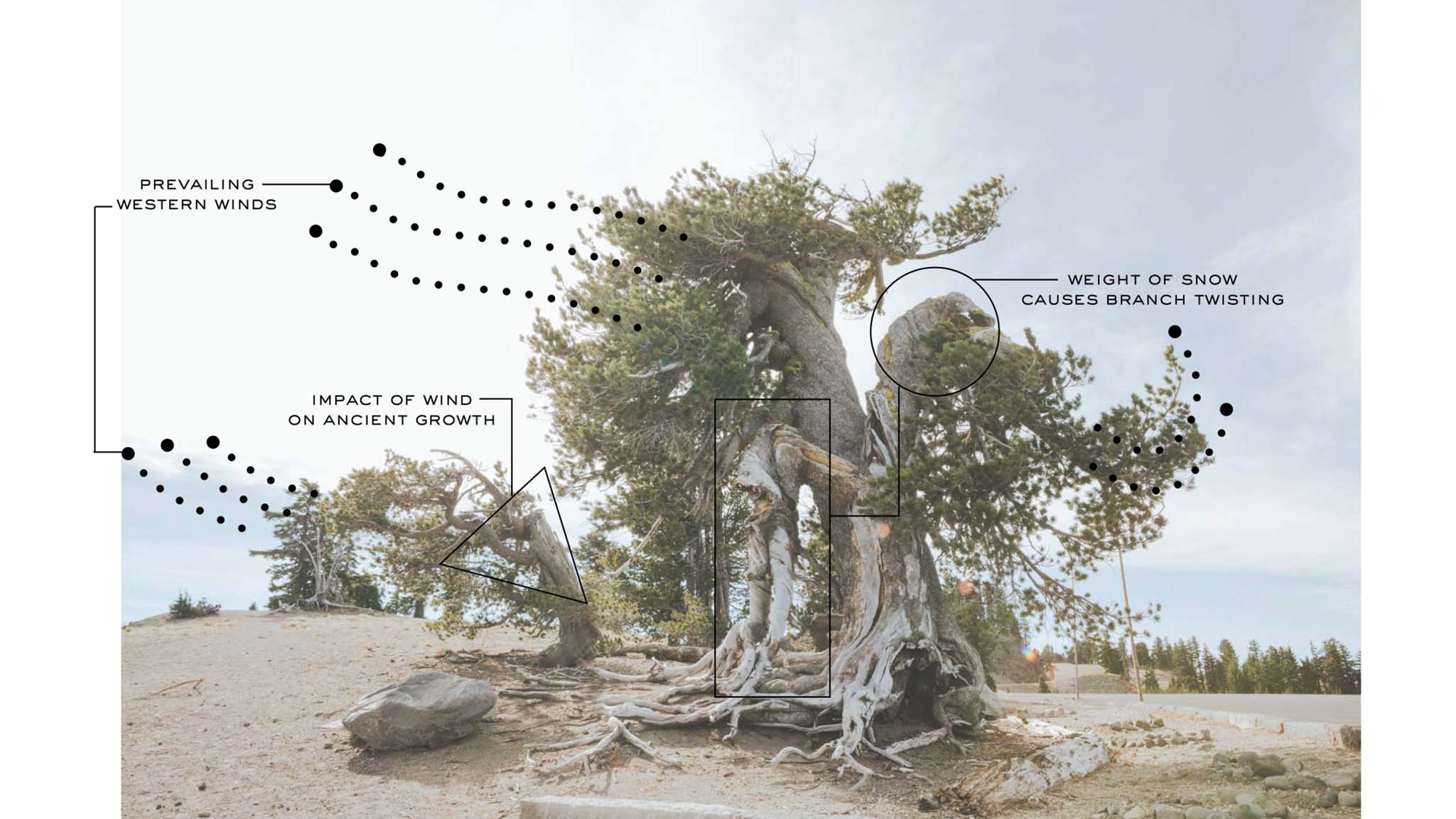
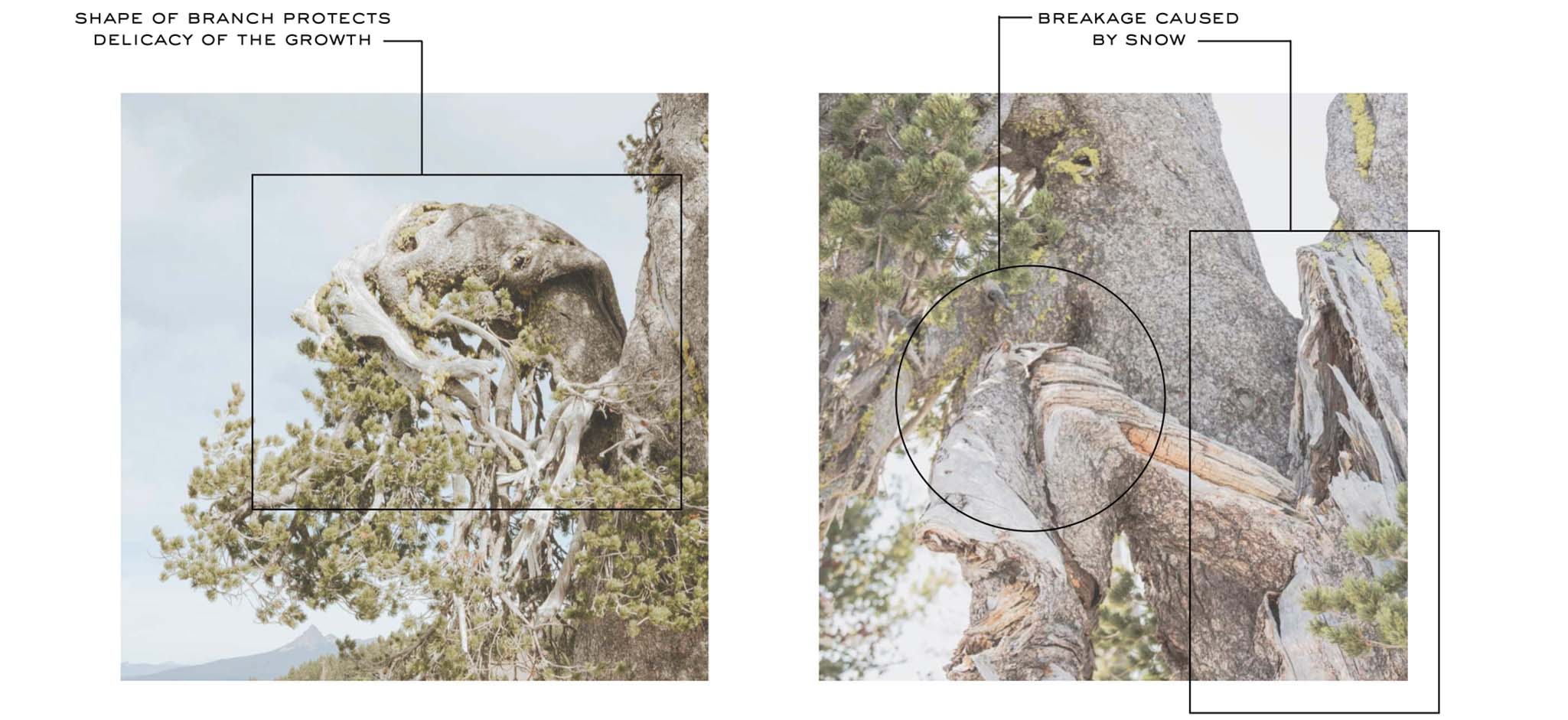
The ancient mother tree stands resilient to prevailing western winds. Magnificent twisting in the primary branches of this Whitebark pine reflect a thousand years of regular snowfall. In turn, these twisted branches protect the delicacy of new growth, year after year as this ancient pillar tree continues to survive some of the harshest environmental conditions in North America.
Understanding the nuances of the environmental factors at play, allows us to style our trees with the accurate interpretation and freedom to interpret the Whitebark pine as a bonsai subject. Not only does it elevate our practice and inform our design, it carries on an aesthetic that could very well disappear in the not so distant future. These relics of nature are critical to understand both on a conservation level, and to elevate our bonsai aesthetic. Understanding the environmental factors of a tree’s native environment allows us to interpret our designs freely and with confidence that it will evolve beautifully for years to come.
